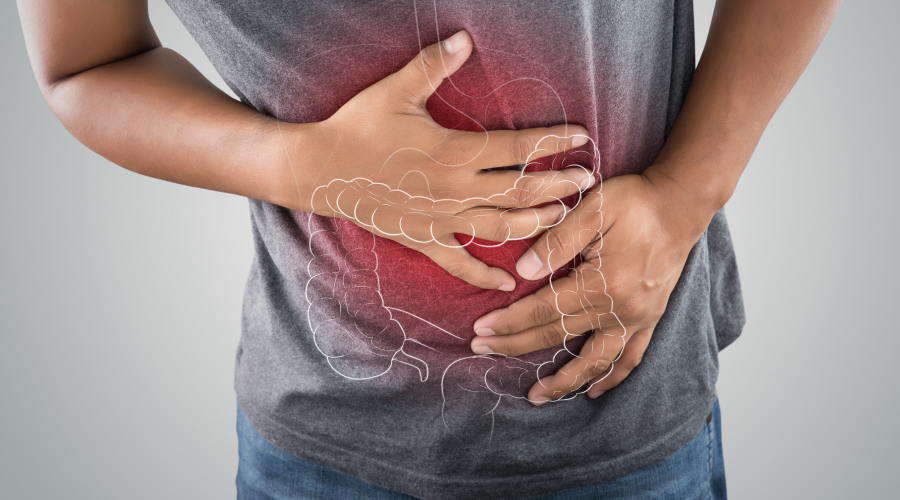

Diarrhoea is primarily caused by viruses and bacteria and is characterised by frequent bowel movements, loose stool, nausea, abdominal cramps, and dehydration. Rotavirus is the most frequent cause of this gastrointestinal problem. Bacteria like E. Coli or salmonella can also cause it. In addition, it may also be caused by other underlying medical diseases, such as inflammatory bowel disease and hormone imbalances.
In this blog, we’ll explore the nuances of diarrhoea, its symptoms, and effective diarrhoea treatment for relief and recovery.
Types of Diarrhoea
Given below are the three common types of diarrhoea:
- Acute diarrhoea: This type of diarrhoea is loose and watery and lasts one to two days. It’s the most prevalent kind and normally settles on its own without intervention.
- Persistent diarrhoea: This type of diarrhoea typically lasts between two and four weeks.
- Chronic diarrhoea: This type of diarrhoea lasts longer than four weeks or occurs regularly over a longer period of time. It could be a sign of a more serious illness that needs to be checked out by a healthcare professional.
How Common is Diarrhoea?
It’s widespread and affects people of all ages. Most adults get acute diarrhoea once a year, while children tend to get it twice a year.
Causes of Diarrhoea
Most cases of diarrhoea are due to an infection in the gastrointestinal tract. The disease occurs because of either parasites, viruses, or bacteria. Other major causes of chronic diarrhoea include:
- Microscopic colitis: This can be a persistent diarrhoea that sometimes affects older adults, usually throughout the night.
- Malabsorption and maldigestion diarrhoea: The primary cause is impaired nutrient absorption and the second is improper digestive system functioning. One example is Celiac disease.
- Chronic infections: A history of antibiotic use or travelling is often a clue to chronic diarrhoea. Numerous bacteria and parasites are often the cause.
- Drug-induced diarrhoea: The diarrhoea can be triggered by laxatives, alternative medicine, and antibiotics.
- Endocrine causes: Hormonal factors, such as carcinoid tumours and Addison disease, can lead to diarrhoea in some cases.
Diarrhoea Symptoms
As described above, diarrhoea is a condition in which a person has loose, watery stools. However, the other diarrhoea symptoms are listed below:
- Pain in the stomach
- Bloating
- A person may feel thirsty
- There may be a fever
- Weight loss
- Abdominal cramps
If diarrhoea is a symptom of some other medical condition, the symptoms can worsen. Some of the worst symptoms which can be experienced are
- A person may experience persistent vomiting
- There may be pus or blood in the stool
- A person may be dehydrated
Diarrhoea Treatment
Over-the-counter (OTC) medicines for diarrhoea, like bismuth subsalicylate, often help people feel better quickly. However, you’ll need to see a healthcare provider if it doesn’t improve or if that happens alongside severe diarrhoea symptoms.
Your healthcare provider may recommend diarrhoea treatment like:
- Antibiotics or antiparasitics: These drugs kill infection-causing germs.
- Medications that treat chronic conditions: Treating underlying conditions that cause diarrhoea, like inflammatory bowel disease (IBD) and IBS, can help.
- Probiotics: Probiotics introduce good bacteria into your gut to combat diarrhoea. Your healthcare provider may suggest you try them. Always talk to your provider before starting a probiotic or any supplement.
Diarrhoea Treatment at Home
You can often get rid of acute diarrhoea through lifestyle changes you can make at home. Here are some diarrhoea treatment at home:
- Drink plenty of water and other electrolyte-balanced fluids: These include diluted and pulp-free fruit juices, broths, sports drinks, and caffeine-free sodas. These drinks replace the water and electrolytes you lose. Electrolytes are substances that help with important processes, like maintaining the balance of fluids in your body.
- Choose foods that can firm your stools: Certain low-fibre foods make stools more solid. Try the BRAT diet: (B)ananas, white (R)ice, (A) applesauce and (T)oast. Potatoes, noodles, lean beef, fish, chicken, or turkey without the skin are also good options. Changing your diet can make a huge difference in getting relief.
- Avoid caffeine and alcohol: Caffeinated foods and drinks can have a mild laxative effect that worsens diarrhoea. Steer clear of coffee, sodas, strong tea/green tea and chocolate. Avoid alcohol, which can lead to dehydration.
- Avoid foods and drinks that give you gas: Avoid beans, cabbage, brussels sprouts, beer and carbonated beverages to prevent stomach cramps. Sometimes, diarrhoea can make you temporarily lactose intolerant. Avoiding dairy until your diarrhoea clears is a good idea.
Conclusion
Diarrhoea is one of the most commonly occurring conditions. Apart from taking medicine, it is essential that you follow a diet plan for a quick and speedy recovery. It is also suggested that you perform some form of exercise in order to improve the condition and minimise the symptoms related to the condition. You may prevent most diarrhoea caused by germs and viruses by drinking purified water, avoiding street food, and practising good hygiene.




